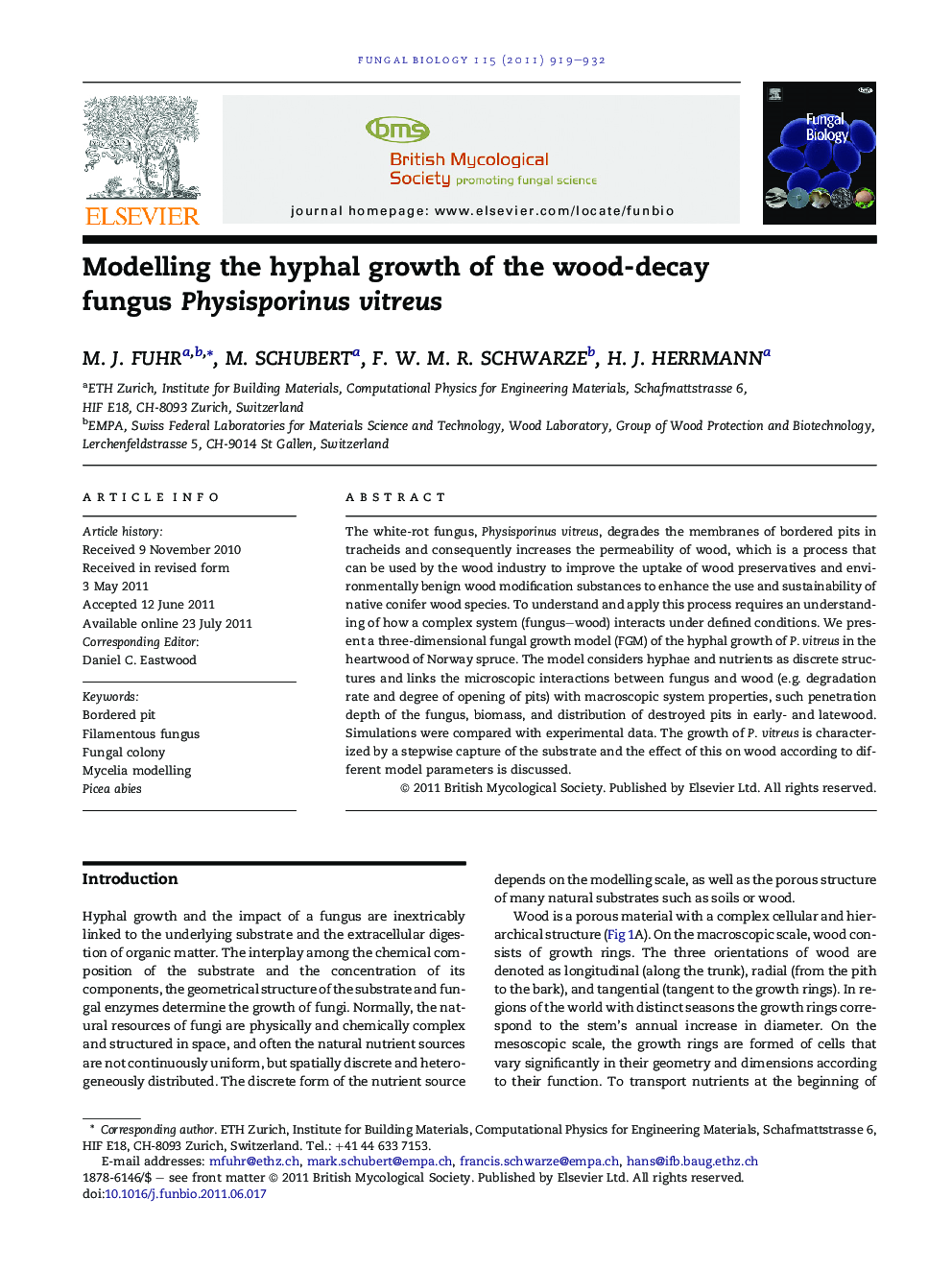| Article ID | Journal | Published Year | Pages | File Type |
|---|---|---|---|---|
| 4357304 | Fungal Biology | 2011 | 14 Pages |
The white-rot fungus, Physisporinus vitreus, degrades the membranes of bordered pits in tracheids and consequently increases the permeability of wood, which is a process that can be used by the wood industry to improve the uptake of wood preservatives and environmentally benign wood modification substances to enhance the use and sustainability of native conifer wood species. To understand and apply this process requires an understanding of how a complex system (fungus–wood) interacts under defined conditions. We present a three-dimensional fungal growth model (FGM) of the hyphal growth of P. vitreus in the heartwood of Norway spruce. The model considers hyphae and nutrients as discrete structures and links the microscopic interactions between fungus and wood (e.g. degradation rate and degree of opening of pits) with macroscopic system properties, such penetration depth of the fungus, biomass, and distribution of destroyed pits in early- and latewood. Simulations were compared with experimental data. The growth of P. vitreus is characterized by a stepwise capture of the substrate and the effect of this on wood according to different model parameters is discussed.
► We model the growth of the wood-decay fungus Physisporinus vitreus in Norway spruce. ► The growth of P. vitreus is characterized by a stepwise capture of the resource. ► We examine the permeability changes induced by the fungus. ► We compare our results with experimental data. ► The permeability changes may be mainly explained by the total number of open pits.
